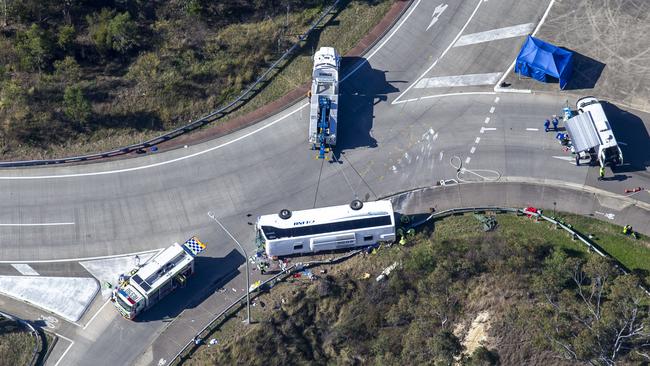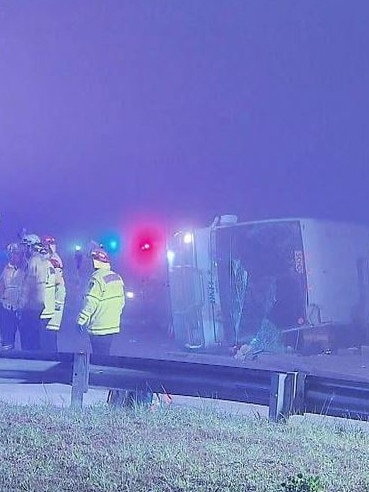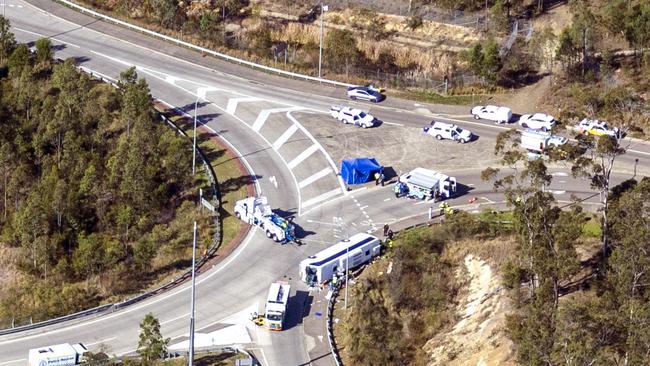New bus and coach safety requirements announced in response to tragic Hunter Valley bus crash
Sweeping reforms on bus safety tech after the Hunter Valley tragedy are only the “tip of the iceberg” when it comes to preventing another devastating crash, Mitchell Gaffney’s dad says.

Newcastle
Don't miss out on the headlines from Newcastle. Followed categories will be added to My News.
Sweeping reforms on bus safety tech after the Hunter Valley tragedy are only the “tip of the iceberg” when it comes to preventing another devastating crash, Mitchell Gaffney’s father says.
John Gaffney, the father of the groom who lost 10 friends in the Greta crash after his wedding, has welcomed the changes, in which visual and audio seatbelt alerts are set to become the next big safety improvement for all new buses and coaches.
But he says there is still more to be done to prevent another incident from ever happening again.
The tech, not dissimilar to what you would see in an airplane, come in response to the devastating June 2023 crash, with the Federal Government announcing new Australian Design Rule (ADR) requirements on Tuesday.
The new rules will come into effect on November 1 next year for new models of buses and coaches and one year later for all new registered and existing model buses and coaches.


The requirements also remove a loophole that allowed some coaches not to be fitted with seatbelts.
Experienced road safety engineer John Gaffney – father of Mitchell Gaffney – said removing the loophole was a “very important” move.
“A lot of our coaches in rural Australia have a lot of overseas tourists and Australia is one of the few countries with seatbelts on buses so I think that will help educate people,” he said.
“What is coming out today is really only a starting point or tip of the iceberg of what needs to be done and a lot of bus safety standards lag best European practice or United Nations and economy community standards.

“The government regulations are a long way behind in mandating safety kits for buses.”
Mr Gaffney has wondered why the Australian Government is so far behind in best safety standards when the practice abroad is showing how it can dramatically improve safety on roads.
“We’re not even having that discussion in Australia yet we have got some of the longest driving hours in the world,” he added.
“We can drive 144 hours a fortnight in a heavy vehicle or bus in Australia and in Europe it’s 94 hours.
“We don’t have the advances in speed and fatigue monitoring that are very important if we allow excessive hours.”
He said European standards had systems in place to monitor drivers for fatigue, distraction and speeding which can send back alerts to the owners of the company.

“Systems are available and in the market overseas and our new buses tend to come in from overseas with a system already built in that needs to be activated in Australia – but there’s no regulatory requirements.”
The new rules championed by the Federal Government will be in addition to other changes made including the mandating of lane departure warning systems for heavy vehicles.
Federal Assistant Minister for Regional Development, Anthony Chisholm said nothing was more important than ensuring people got home safety when travelling on our roads.
“The pain caused by the devastating bus crash in the Hunter Valley continues to be felt by the families and wider community 18 months after the incident,” he said.
“Our government is doing what it can to prevent a similar tragedy from occurring again.
“That’s why we’re working with states, territories, industry and affected family members to identify and amend design rules to ensure people are kept safe by their seatbelts should the worst happen.
“I certainly understand their passion and the drive that they’ve brought to this.
Bus Industry Confederation Chair Tony Hopkins also praised the new requirements and the commitment to keeping travellers safer on our roads.
“Our industry applauds the government’s commitment to bus operators, the public and, bus safety on delivering the first in a series of outcomes to further improve bus safety for the millions of loved ones we carry every day,” he said.
“These safety outcomes further improve what is generally regarded as the most stringent seatbelt rules for buses in the world.
“With seat belt usage currently as low as seven per cent on some services, this provides a simple but powerful message, that reminds bus passengers to fasten a seat belt.”
Got a story tip? Email amy.ziniak@news.com.au





